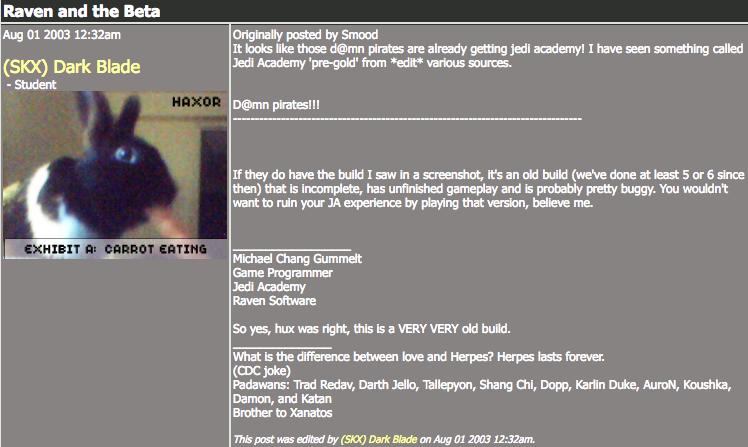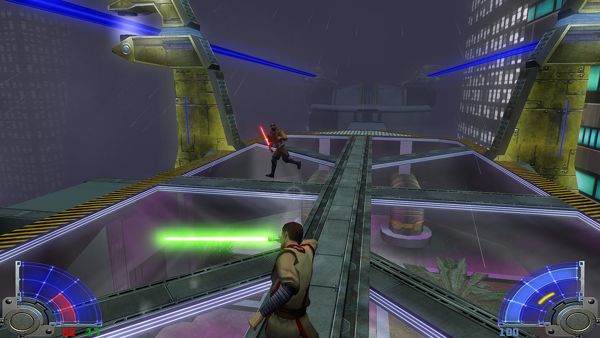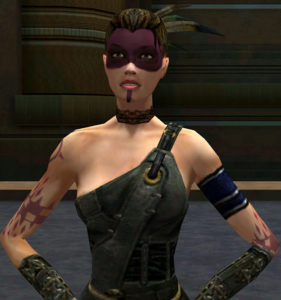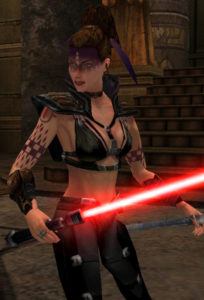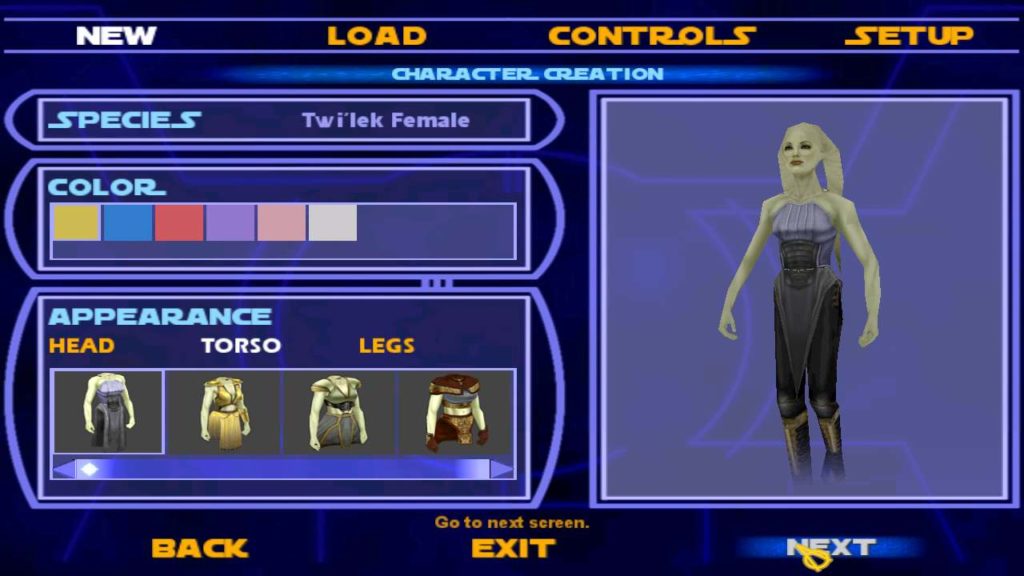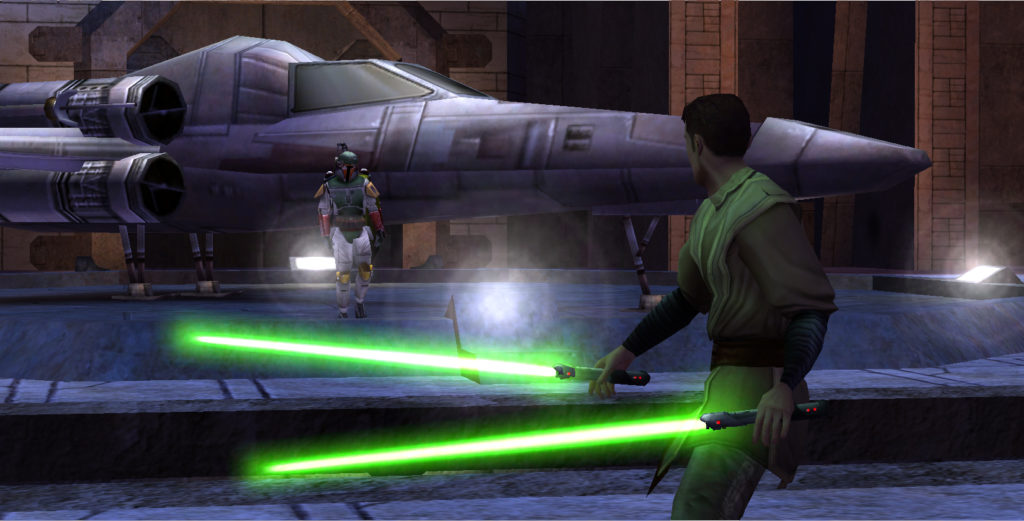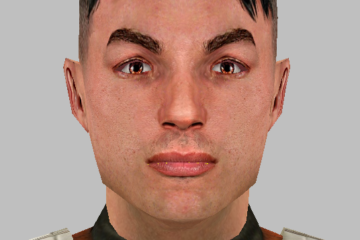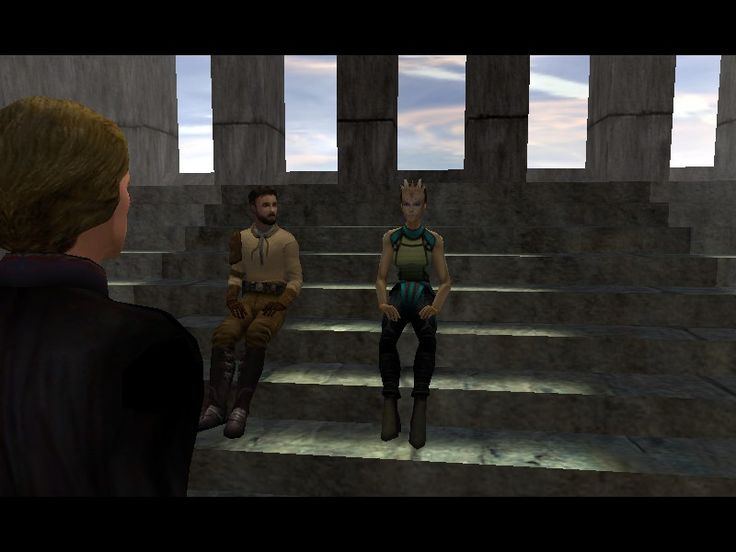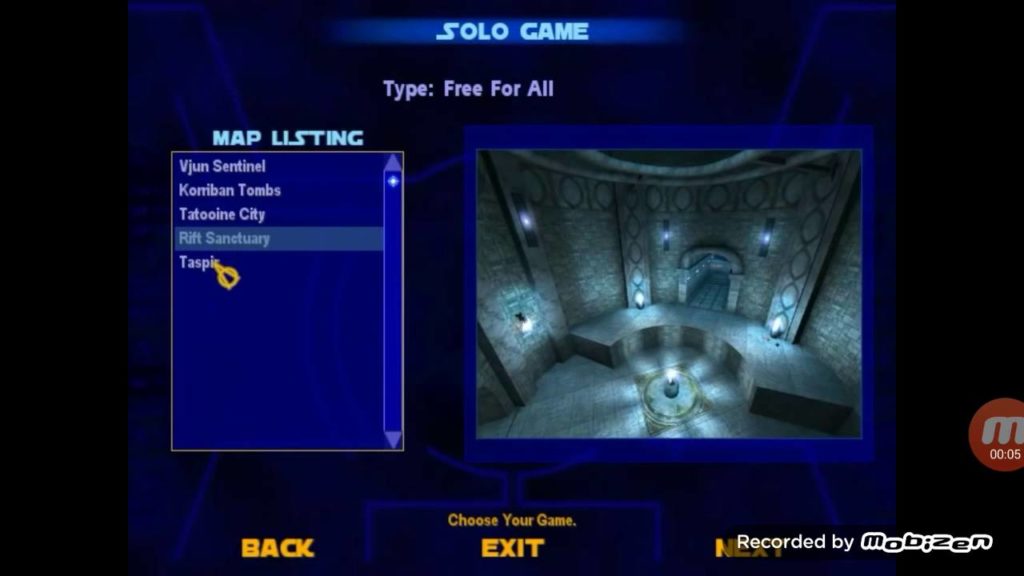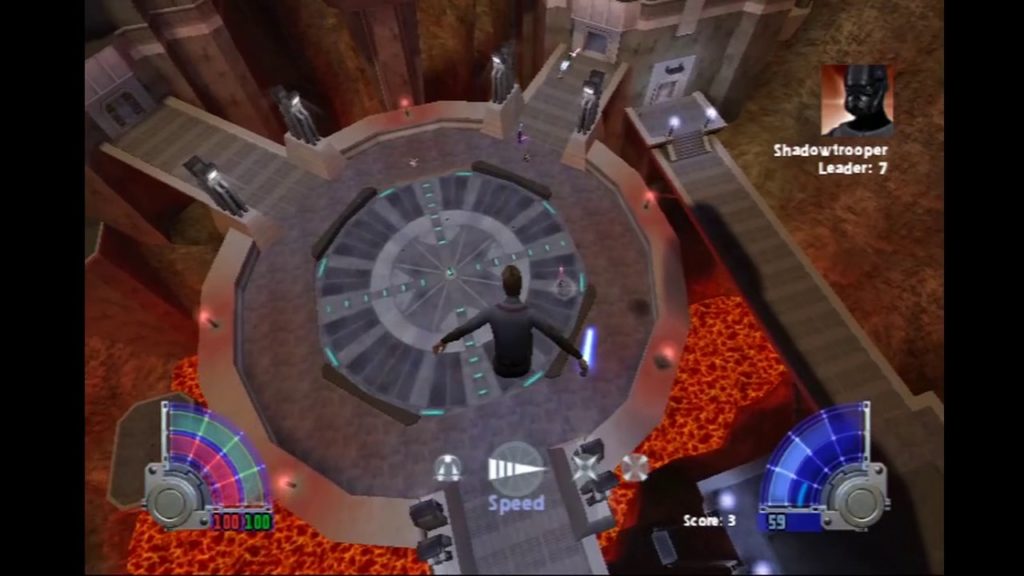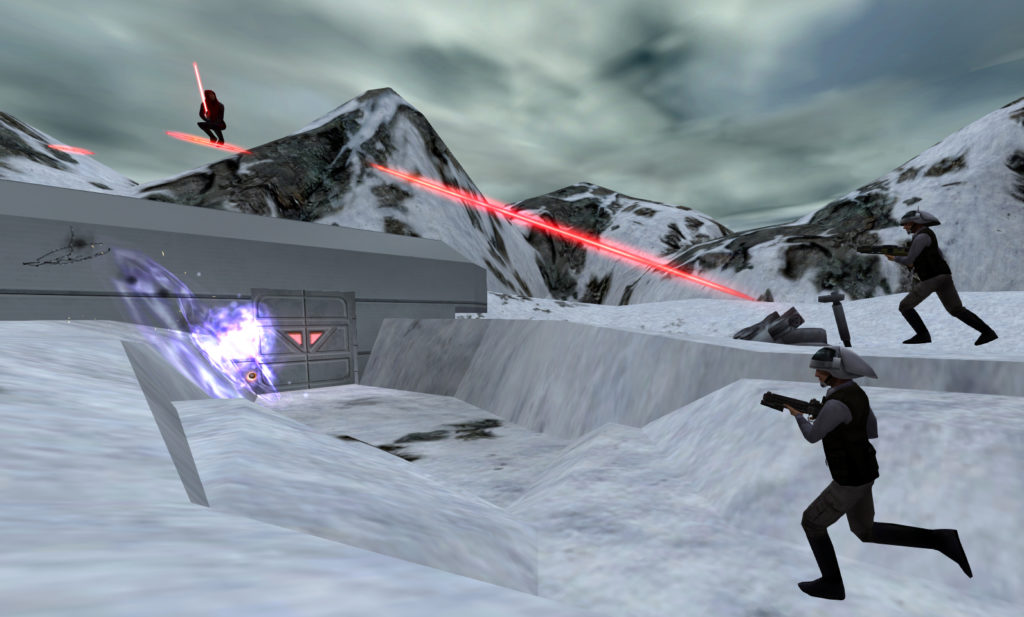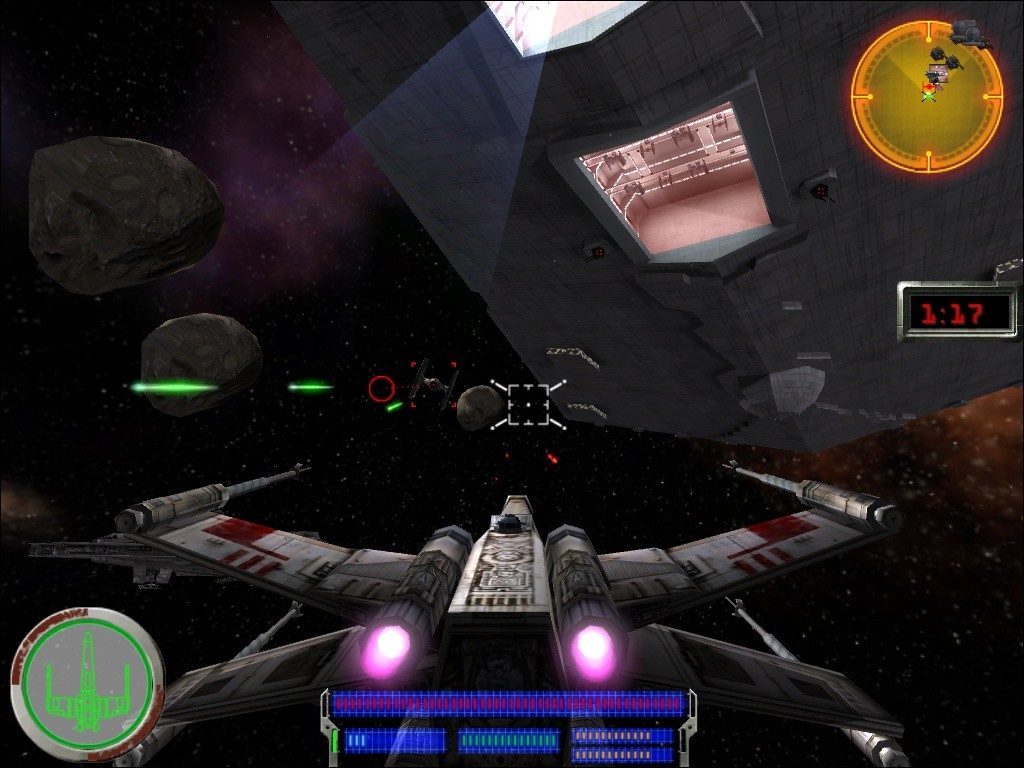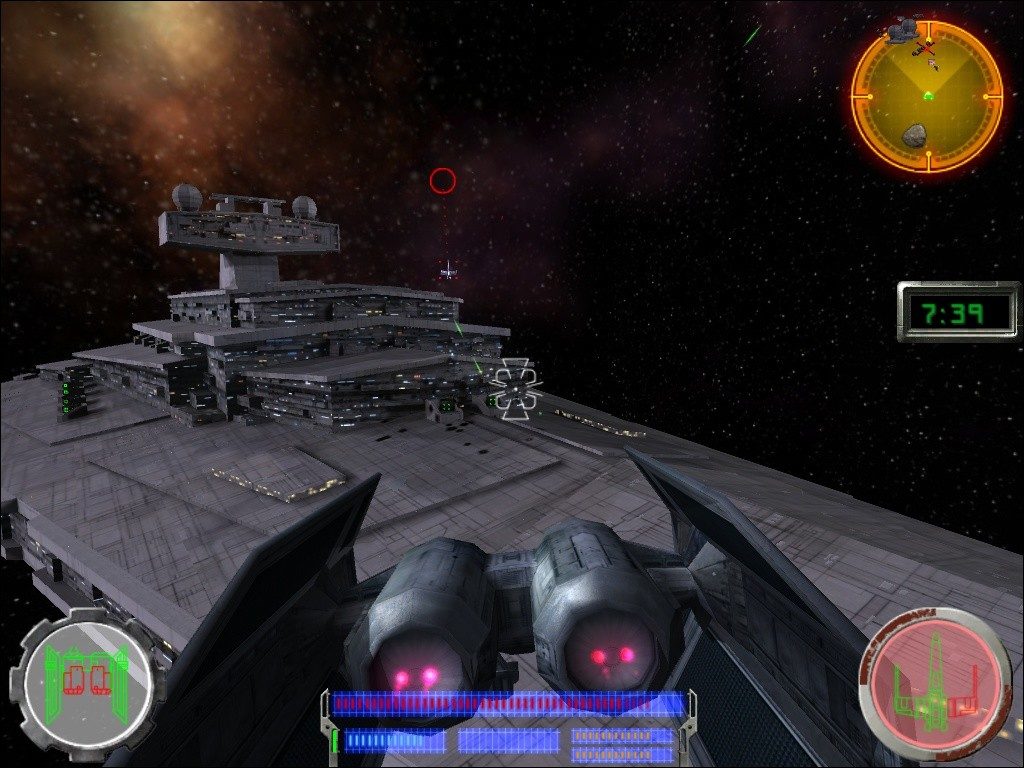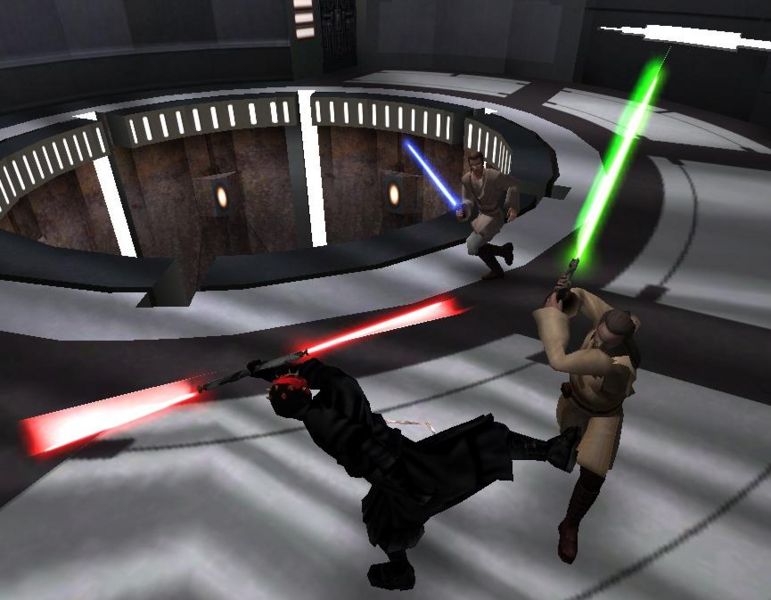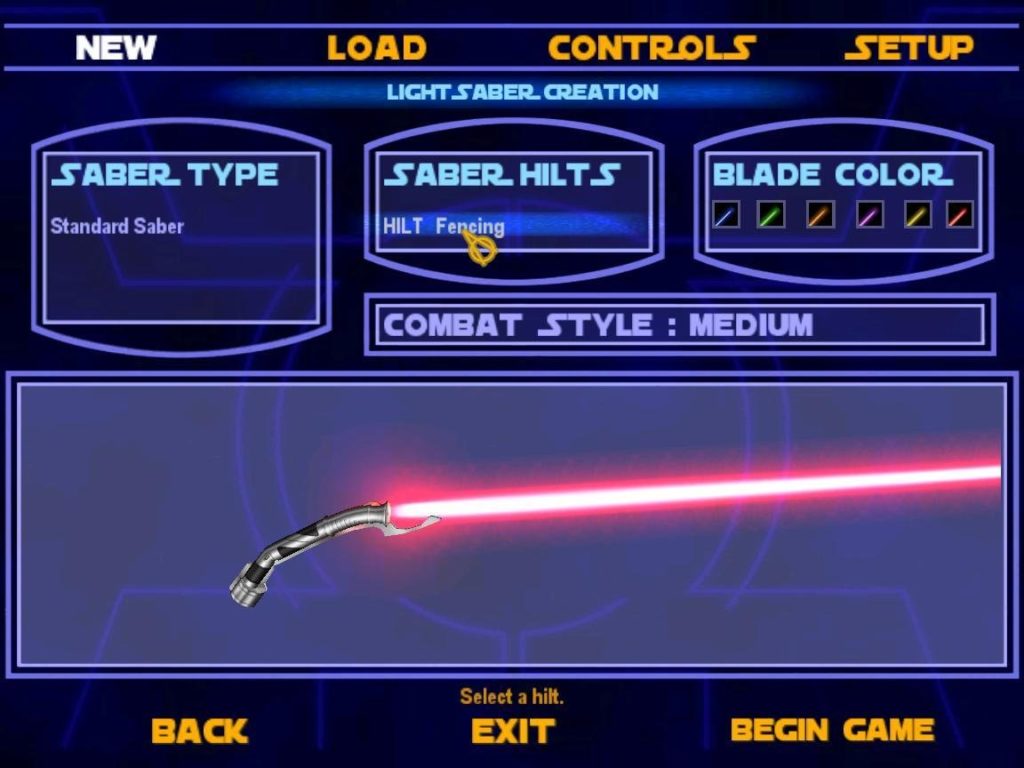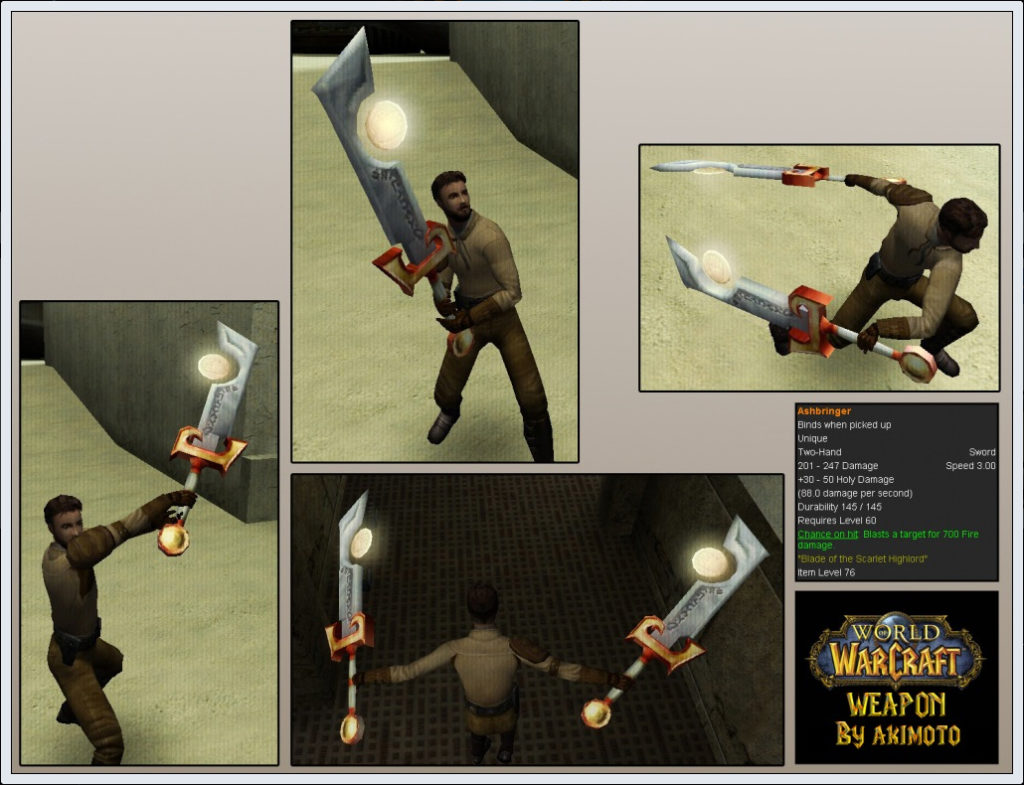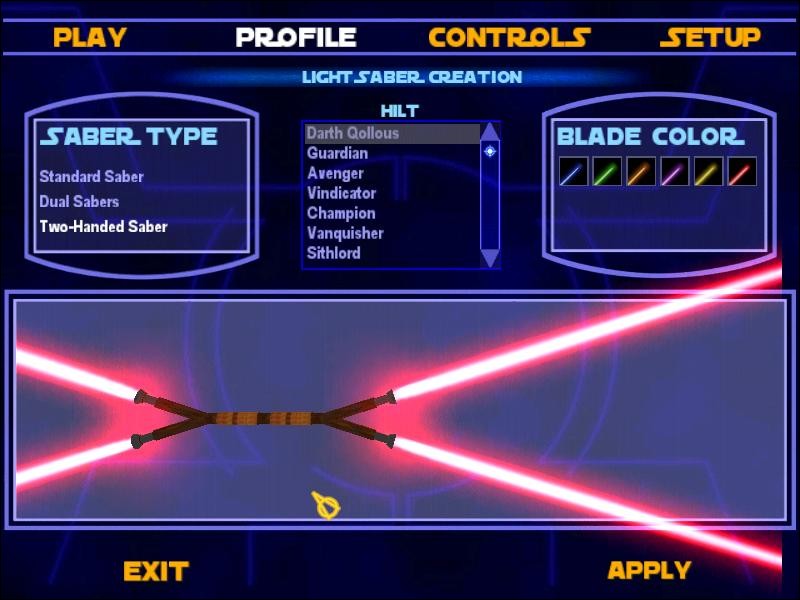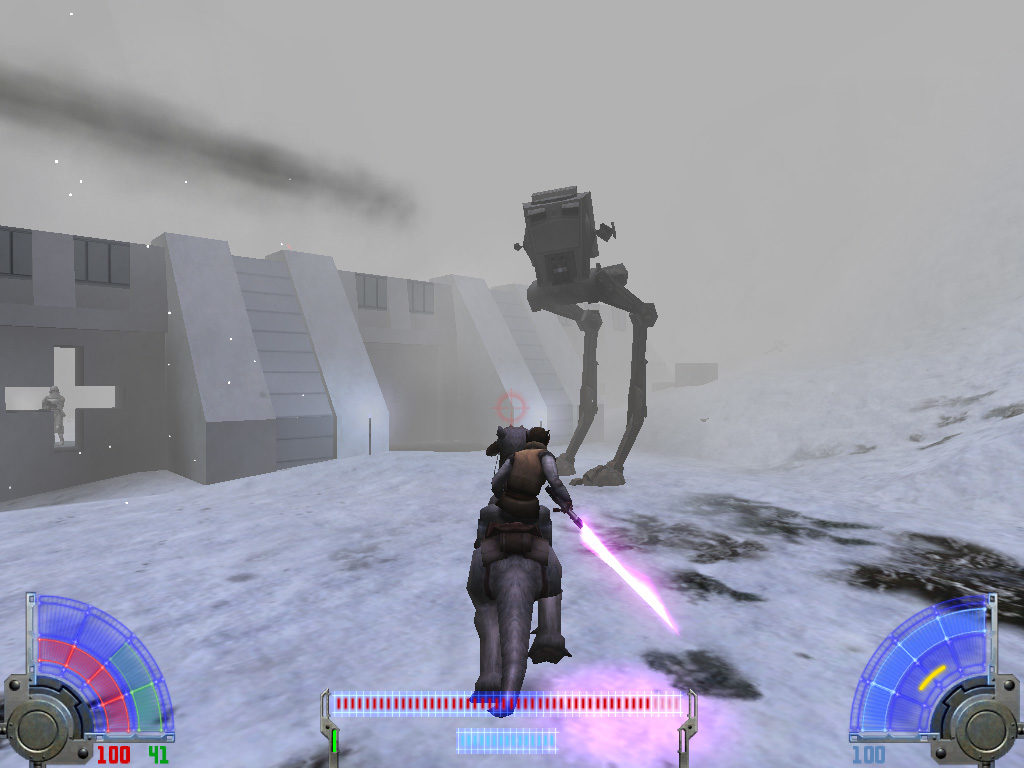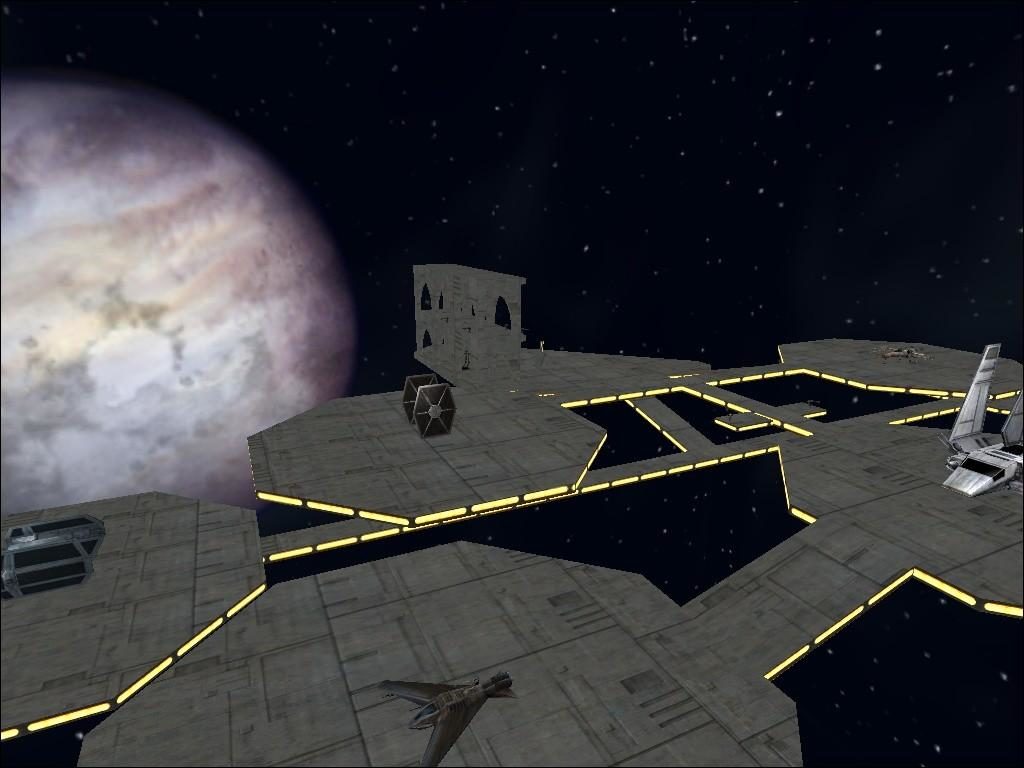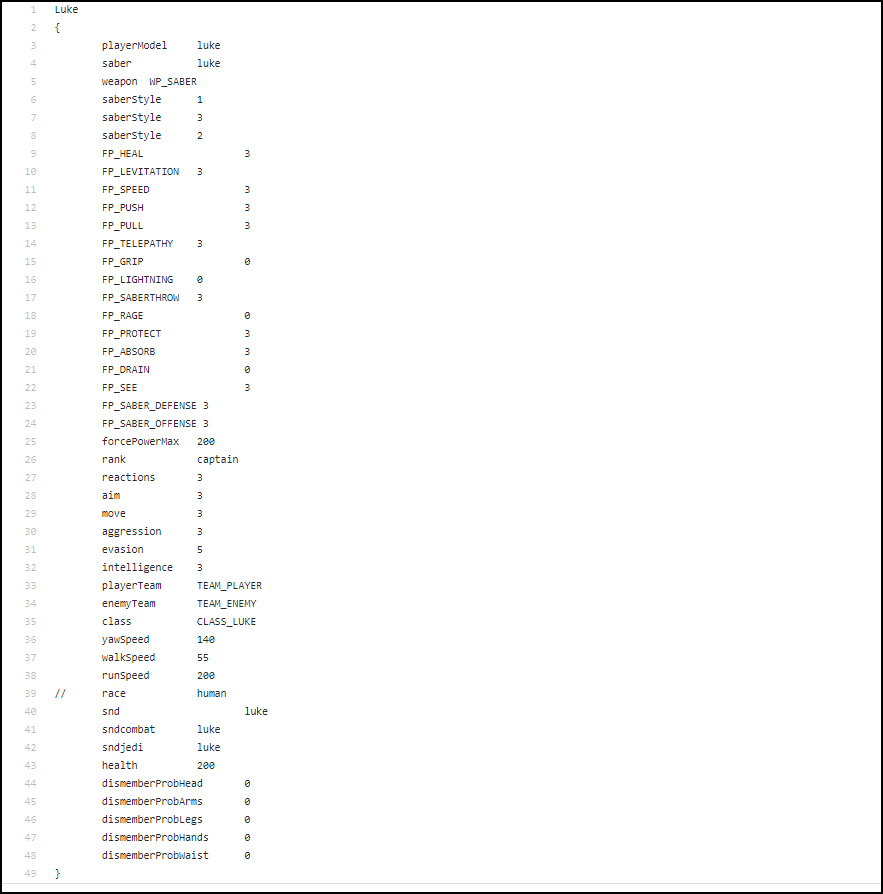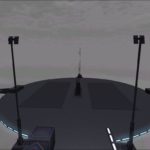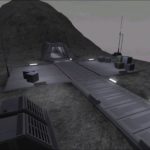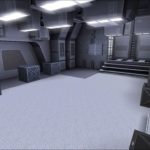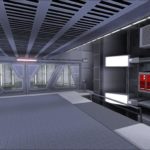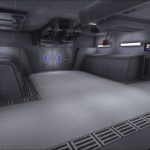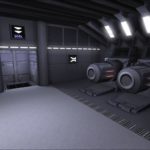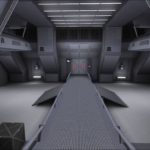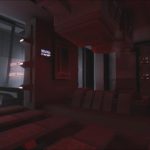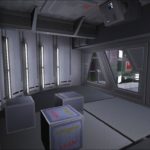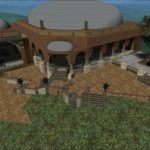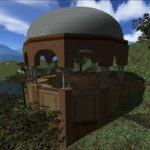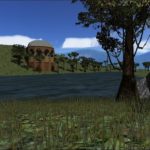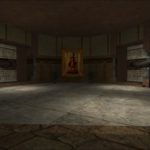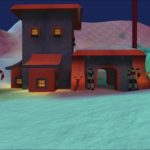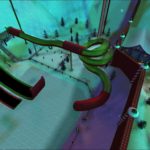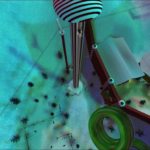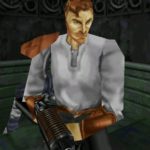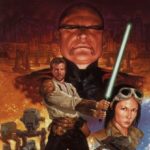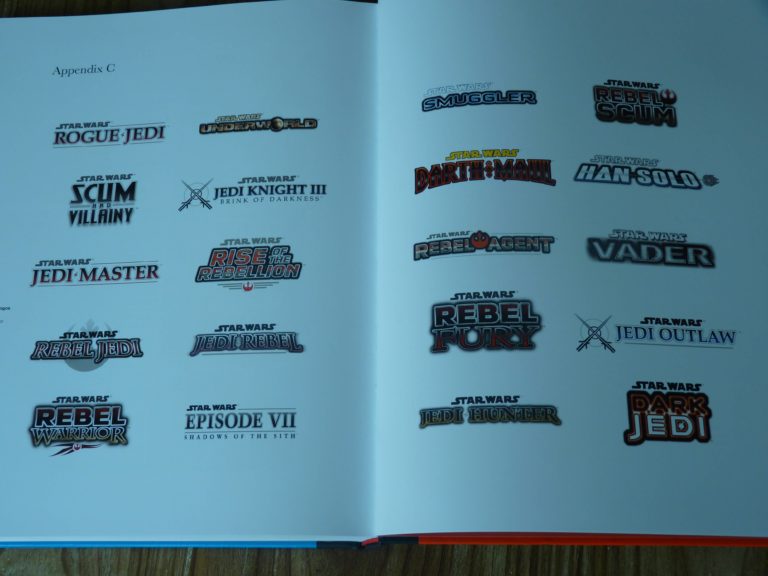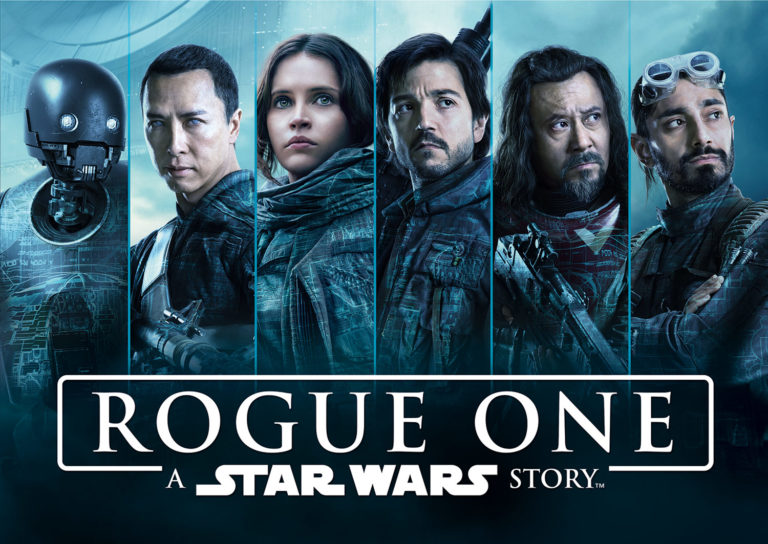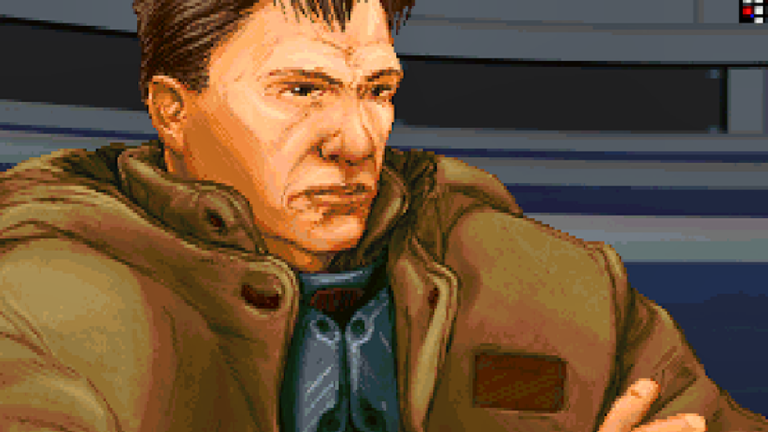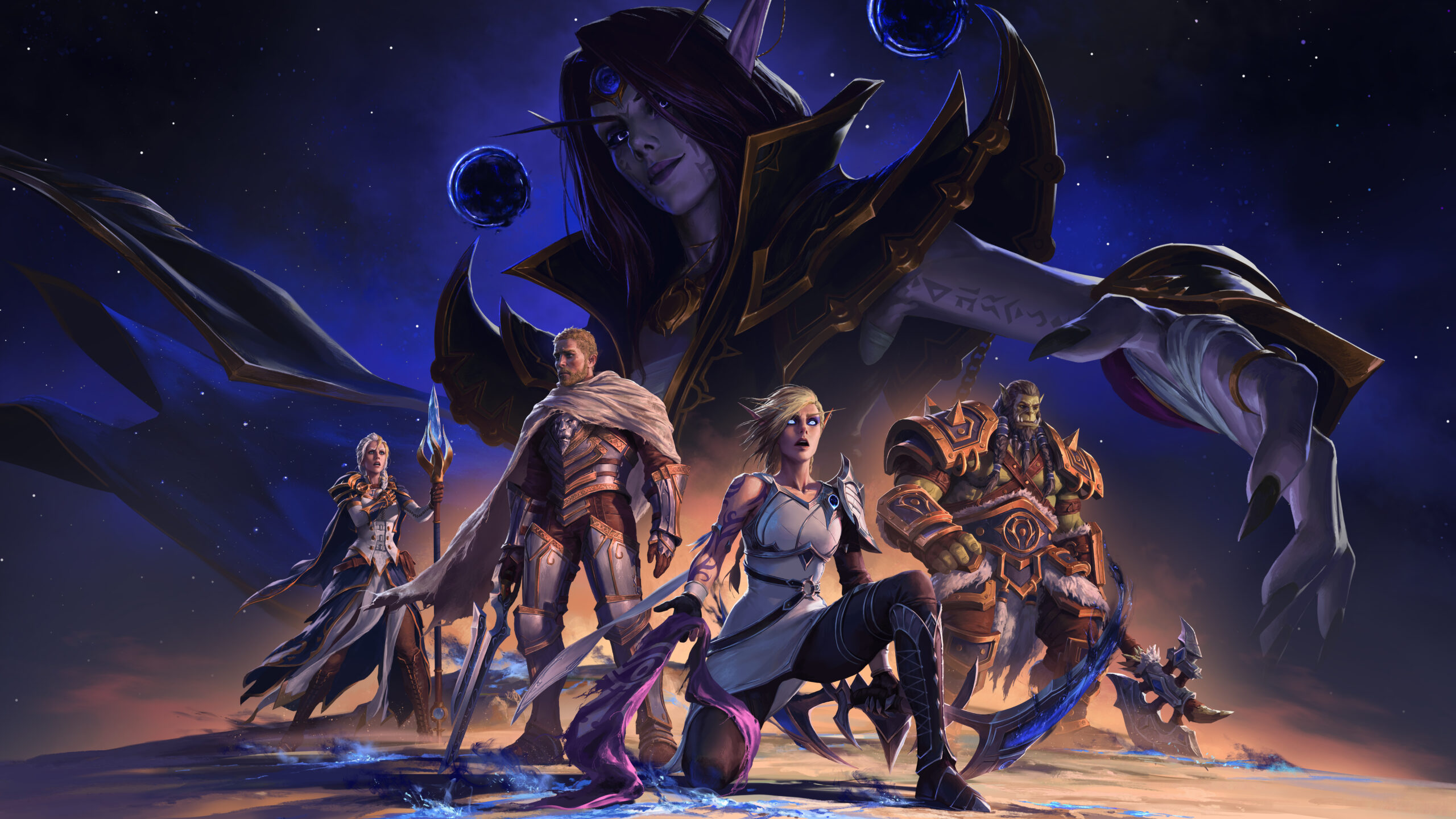
I still remember it as if it was yesterday, it was a few months into my Jedi Outcast adventure when my clanmates told me some exciting news.
“They’re making Jedi Knight Three!” They said.
“Holy Shit!” I exclaimed. I was ecstatic that Jedi Outcast was getting a sequel, the hype was real.
Mind you, 2003 was a much simpler era, the proliferation of social media that we see today was just taking its first shy steps, and much less gaming outlets existed; not to mention that English Chinese cartoon message boards were still new and more niche. I didn’t knew much about Jedi Academy beyond its name, and it’s not like I made efforts in obtaining additional information.
Approximately a month and a half before the game’s release date, a “Pre-Gold” build of Jedi Academy began to circulate on the Internet. I remember how surprised my friends and I were when the news broke.
Many theories as to who was the culprit arose across all of the community forums, some had more credence than others, but most, if not all, spawned out of pure speculation and unconfirmed hearsay. The theory with the most consensus and the most plausible one at the time was that the leak was the work of a disgruntled employee—or his girlfriend, depending on who you asked.
The temptation to get our hands into that leaked copy was too intense, one half of my friends preferred to wait and not dabble in the realm of illegality, but some of us couldn’t resist and downloaded it. I hit that download button so hard and fast and got my copy with the help of my blazing fast 25Kb/s download speeds.
Contrary to Raven’s allegations, that build of the game was indeed playable from start to finish; it was only missing a few textures, most (if not all) skybox textures, and a few minor bugs here and there, but nothing too game-breaking.
Even the multiplayer was playable—albeit without a master server nor the dedicated server executables, hosting a game and using the /connect command to manually join worked just fine.
In a way, the leak served as an unexpected beta/sneak peek of Jedi Academy. The game was released nearly eighteen months after Jedi Outcast, it was built upon the core of Jedi Knight 2 and ran a further modified version of the id Tech 3 engine, an engine that was then beginning to show its first signs of aging.
The most notable addition, gameplay wise, was the new two Lightsaber styles: a Lightsaber staff, made famous by Darth Maul, was now a full-fledged combat style (before, a half-assed implementation existed in JK2 but it was only part of a cheat code).
Dual wielding, a style Anakin Skywalker popularized in Episode II: Attack of the Clones, made its debut in the series. These two styles were given stances of their own—and even unique “kata” special attacks; while the single saber stance, ever so perfect, returned in all its mighty glory with a few new special moves.
Visually, the game resembled much of its predecessor. While a considerable amount of assets from Jedi Outcast were reused it did had a substantial amount of graphical improvements and new textures; your journey took you across new places never before seen in the Jedi Knight series, as well as famous planets such as Tatooine and Hoth. Vjun, a prominent location in the Expanded Universe, was an important destination in your journey.
Tavion Axmis, a secondary antagonist in Jedi Outcast, was now the primary antagonist of the story; as a result, her in-game model received a fitting rework.
Jedi Outcast’s weapon arsenal returned with two new additions, the DL-44 heavy blaster pistol, which replaced Kyle Katarn’s signature Bryar Blaster Pistol, and the Stouker concussion rifle, a powerful new heavy weapon.

Kyle Katarn, the hero and protagonist of the Jedi Knight series wasn’t playable this time around for the first time since the Mysteries of the Sith expansion for Jedi Knight I. This time, the celebrated hero was your mentor, and the protagonist of this story was an individual named Jaden Korr.
Raven provided you only with a name—and the rest was up to you; whether Jaden was male (Human, Kel Dor, Rodian) or female (Human, Twi’lek, or Zabrak); whether Jaden wielded a single lightsaber, or dual wielded, or perhaps he/she was a master of the saber staff style, everything was up to your preferences, including the ultimate fate of Jaden Korr.
The character creation was far for complex, but rather simple yet effective, you had your race options, Jaden’s attire was selected using a simple mix-and-match system that had the ability to do minor alterations of the attire’s color, in the case of a Twi’lek female, you could choose her skin tone.
The create-a-jaden wasn’t limited to the single player campaign, you could use it for multiplayer too if you wished.
Unlike other entries in the Jedi Knight Series, Jedi Academy’s campaign was less linear. Gone were those first segments of the game where you didn’t had access to a Lightsaber that characterized Jedi Knight I and II. After completing the introductory level, you were presented with a list of possible missions across the galaxy, you could tackle these in any order of preference as you foiled the plans of the nefarious Disciples of Ragnos whilst crafting your own experience.
Successfully completing a mission allowed you to level up your force abilities, again, in any way that you saw fit; completing every single level wasn’t necessary to finish the game, but it was highly recommended.
Depending on the path you took as you learned new force abilities, Luke Skywalker would either compliment or warn you if you dabbled too much into the Dark Side (at least he didn’t try to kill you while you sleep if you chose force grip).
At the campaign’s halfway point, you had the ability to further specialize Jaden’s Lightsaber combat style, either remain a single saber user, or go dual wield/saber staff.
All in all, the Jedi Academy single player experience was fresh and entertaining, no run was ever the same, as the next time you played it you could try a dark side approach, do the levels in a completely different order, or even try a new Lightsaber style to spice things up.
Some characters were simpler than others, Luke and Kyle took a mentor back seat, but where present in the plot. Tavion and Alora were great Dark Jedi, and then there was Rosh Penin…
You think Jar-Jar Binks was bad? Wait till you suffer through Rosh, he is the ultimate test, if you can somehow endure him thorough the game, then you’ve reached perfect Zen.

The multiplayer in Jedi Academy was just as good to Jedi Outcast, if not outright similar; what was already great was expanded upon. Raven was wise and didn’t try to fix what wasn’t broken—for the most part that is.
Everything that you loved about Jedi Outcast’s multiplayer was back in addition to the new Lightsaber styles and the two new weapons; you could choose your character and force power build in the same way you did back in JK2, in addition, you could choose the style of your Lightsaber hilt and the color of its blade. If you preferred, you could use all of the options available to create your very own Jader Korr in multiplayer.
However, not all upgrades were for good; the Lightsaber combat in Academy felt somewhat inferior to Outcast, the new hit collision wasn’t as precise and sometimes the combat tends to be more “floaty” and erratic; the new combat styles made that flaw much more evident.
If you prefer to duel against other players with your Lightsaber, I’d recommend doing it in Jedi Outcast, as the single saber combat in JK2 is technically better and far more precise. If you want a more varied and frantic Lightsaber hack and slash multiplayer action, try Academy’s 3 styles and numerous stances.
Personally, I’d like to think that Raven acknowledged the existence of the Saber Code to some degree and tried to build maps that steered away from that paradigm in favor of a more “the way it was intended” multiplayer precept. The five default Free for All Maps that the game shipped with were designed in a more traditional “Quake 3 arena” Deathmach layout (the Tatooine FFA map was perhaps, the one that could barely classify as an exception, if at all)
Vjun Sentinel, also known as “FFA1” was shaped like a tall cylindrical structure, narrow corridors, and ample walls that you could wallrun your way through were some of its most prominent features, a stark contrast of JK2’s counterpart: FFA_Bespin, which had a more open design, and had several spots with sufficient space to host duels, including the much celebrated “Pad.”
Of all the five standard free for all maps, Taspir or “FFA5” was the only one that had an area that could serve as a “Duel Pad” in an open space, while the rest of its layout was more cloistered and constrained. Rift Sanctuary was a close second, but its layout also favored a “sword and gun” type of combat.
From a visual standpoint, all maps were diverse and colorful, Vjun Sentinel had an Empire vibe attached to it, Tatooine had that sand we all know and love, Rift Sanctuary had a crystalline cavernous style, and Taspir had a volcanic facility theme going on.
The game shipped with 5 Free for All Maps, 5 Capture the Flag Maps, 10 Duel maps, and 3 Siege mode maps. Of course, you had the choice to add as many custom maps as you wished.
A few months after its release, Raven released an official set of bonus maps, it included 4 new FFA maps, a new duel map, and a new Capture the Flag map. Compare that to the DLC found in modern games, had Jedi Academy been released in this era you can be sure that you’d be charged for those six new maps.
Siege Mode
Of all the new additions done from Outcast to Academy, Siege Mode was by far the best and most complex addition—paradoxically, it was one with the most absolutely wasted and underutilized potential of them all.
Siege mode was one of the precursors of the objective-based assault modes that are now prominent in modern games. It threw away the default customization options available in other modes that helped you build your omnipotent Jedi warrior and instead gave you an array of pre-built classes to choose from, each with their own limited selection of weapons and powers and with their own list of strength and weaknesses.
One team was always in the offensive, they had to complete a series of objectives to progress through the map, while the team in the defense had to stop them no matter what.
The Siege_Hoth map was a simple recreation of the battle of Hoth, albeit with certain creative liberties. Vehicle support, a new but then underutilized addition to the engine, was used in Siege mode; in the Hoth level, some of the players had to board AT-STs to destroy the rebel defenses, while their companions would infiltrate the base and raise a bridge so the machine could walk through a chasm.
The other two maps were Siege_Desert and Siege_Korriban, an official fourth one, Siege_Destroyer, was released months later, this one served as a technical demo of the vehicle support Jedi Academy sported, and the only official map that was purely based on space combat.
In Siege_Destroyer, the rebels had to assault and disable a Star Destroyer that was about to capture the Millennium Falcon, the Empire team had to stall the relentless assault on their flagship until the Falcon was captured.
Raven bundled the Siege_Destroyer map with tutorials and all the documentation required so that the community could be able to create their own Siege mode maps, as well as open the way for the creation of new vehicles for all sorts of maps.
Over the course of the years, people released several Siege maps of varied types, but for all its fun and enjoyment, Siege mode was never as popular as free for all “Saber Code” servers.
Power Duel
A new variation of Duel mode, the premise of Power Duel was to allow players to replicate the two versus one duels that had been shown in the Prequel Trilogy (Such as Darth Maul vs Obi-Wan and Qui-Gon and Count Dooku vs Obi-Wan and Anakin).
Two players would face a single combatant, who received bonus health and force resources to offset his numeric disadvantage; as fun and novelty Power Duel was, it was sadly under received, as people had been replicating that experience in FFA all along, even in Jedi Outcast.

If there is one thing that Jedi Academy was vastly superior over Jedi Outcast it was in its customization. The expanded capabilities of the engine allowed the community to create more elaborate mods for Jedi Academy.
Even the shader scripting framework had more stuff to work with, you could even replicate (to a certain degree) the “cell shading” visuals that The Legend of Zelda: the Windwaker is known for with just a few lines of code.
Porting Outcast mods into Academy
Every custom map or skin that was done for Jedi Outcast “worked” for Jedi Academy straight out of the bat—for the most part that is.
Models and skins did in fact functioned, but they had some issues; due to a minor change in the way the game read the skin’s sound file location JK2 skins would not play their corresponding sound files; this was easily fixable with a .pk3 patch file that contained an updated sound.cfg file. I released a single patch file that elegantly fixed this issue for every Jedi Outcast skin I made for my clan without breaking the skins’ regular functionality in JK2.
The other problem wasn’t that easily solvable. In Jedi Outcast, all models had no animations for their left hands, as these were only used to hold weapons and all lightsabers were held in the right hand. This presented a problem if your JK2 model was used with dual wield Lightsabers, as the saber held in the left hand wouldn’t visually move (but the hits would still properly register), it was very visually disorienting.
If your JK2 skin wielded a single saber or a saber staff, then you wouldn’t see or have any problem, the only solution for this problem was to reweight the model using the updated Jedi Academy skeleton rig file—unfortunately, not every mod author updated theirs, leaving dozens of fantastic models in a state of broken JA compatibility.
If a skin was based on an existing Jedi Outcast model (say, Kyle Katarn, Reborn, Desann, et al) Then it was just a matter of replacing the JK2 model.glm file in your skin’s .pk3 file with the updated JA counterpart and then repacking it, or replacing it via a patch file, with the former being the preferred choice if you wanted to publish your skins on a public website.
When it came to maps, a similar problem arose, Jedi Academy used new lightning settings on maps, the new standard wasn’t retroactively compatible with Jedi Outcast in its entirely, a simple change in the map’s project file and subsequent recompile for JA was all it took.
Gameplay altering mods weren’t compatible and didn’t existed for the first months of Jedi Academy’s life, as there was no updated SDK for weeks.
The .sab scripting system
In Jedi Outcast there was only one type of saber, you could mod its appearance but it would apply to every other player you saw. The lightsaber in JK2 was just a regular weapon just like every other one in the game.
For Jedi Academy, Raven implemented a new and expandable lightsaber system, powered by simple scripts stored in .sab files, this allowed the potential to add as many Lightsaber models and types as you saw fit. Sabers from the five movies (at the time) and weapons from the Expanded Universe were among the most downloaded ones, as well as brand new creations.
The system wasn’t just limited to regular Lightsabers, with it, you could also introduce melee weapons of any kind, be it axes, swords, staves, etc.
Even weapons from other video games, movies, and tv shows were added over time; from Cloud’s Buster Sword to the Sword of Omens, you could find anything and everything. I personally used a sword/lightsaber hybrid model someone made, I tried to look for it but unfortunately I wasn’t able to.
With .sab scripts, you could alter every aspect of your new lightsabers, you could choose what sounds it would play, how many blades it had, the length of its blades, and several other variables, a strong saber that restricted your ability to use force powers? Yup. One that made your parries better? You got it.
The openness of the system was also one of its flaws, as you could bend the rules with it and make absurdly long sabers, some of which gave you an unfair combat advantage, the “Gorn” saber that was part of a popular weapons pack was a prime example, the blade was extremely long.
If you’re curious as to how .sab weapons worked, you can check out Jedi Academy’s source code on github for the reference file and some examples.
Vehicle support
Support for vehicles was another huge addition to the engine, it was used for sections of the single player campaign, but applying it to community-made multiplayer content is what made it truly shine.
Thanks to the reference files and tutorials released by Raven alongside the Siege_Destroyer map pack, mod makers were able to add new vehicles ships from the Star Wars Universe into Jedi Academy. From the Naboo Starfighter to the Hailfire droid, even the A-Wing and Republic ships from the Clone Wars.
This also opened the path for “racing” maps, a small but fun niche subtype of maps, most of them involved the swoop speeders.
KOTOR Flight School was one of the first and most popular “training” maps that existed, it was made as a clan map and then released to the public, over time, dozens of maps with a focus on vehicle and space combat were released.
There was a hidden interaction between ships and Force Lightning, attacking ships with it caused them to turn on and propel forward, instantly killing anything in its path, hiding in cover, waiting for an innocent soul to attempt to board a vehicle, and then using lighting on them to get them killed was exquisitely hilarious.
NPC Spawning
The engine now had the ability to let you spawn NPCs for your own amusement or as part of maps, an improvement over traditional bots as these would not take up a player slot in a server and didn’t required maps to have a path layout for them to function. You could spawn dozens, if not hundreds of NPCs and blast them away or get swarmed by them.
Just like sabers, adding new NPCs was as easy as writing a few lines of codes, from to their behavior and combat preferences.
Don’t you dare try to spawn Marka Ragnos—unless you wanted to crash the server.
Maps
From a technical standpoint, custom maps in Jedi Academy where bigger, badder, and better than Jedi Outcast. The SDK shipped with a slightly updated version of GTK Radiant
Some JK2 community favorites, such as Jedicouncil and Matrix Reloaded, received updates for JA, their authors used the opportunity to add new content to them, from new rooms to minor adjustments.
Map makers now had access to a more robust scripting system for their creations, allowing for more interactivity between the map and the player. Of all the custom maps (at the time) that took advantage of it, Fearis Incident by ‘mslaf’ was a crowning achievement to interactivity.
The entire map was designed with interactivity and destroyable objects in mind. It was a linear map, from point A to point B, but there was always some crate you could push to attack your opponent, one pipe to pull, booby traps to activate using your force powers, and much more.
Had my friend and I finished our Jedi Outcast/Jedi Academy Machinima series, ‘fearis’ would had been a crucial plot point, and all the destruction that could be done to on that map would’ve served for an action-packed scene.
Naboo Hills was an example of an open and vast map, with ample space for the vehicles it came with (and any other that you wished to spawn), it also had a gazebo-like structure for duels at the center.
Christmas in Whoville was a map full of charm, this Dr. Seuss inspired map had so many amenities, it was silly yes, but cozy. My friends and I had this sort of Christmas tradition of playing in the map, spawning an obscene amounts of NPCs, and one rideable Tauntaun vehicle for each, slashing through the hordes of enemies in a “Riders of Rohan” fashion.
Gameplay Mods
Jedi Academy undoubtedly had more gameplay mods than Jedi Outcast ever did, here’s some of the multiplayer ones I remember fondly:
JAMod
cHoSeN oNe’s (in)famous JAMod, the backbone of the majority of the Jedi Outcast clan communities returned for Jedi Academy, albeit in a reduced and more streamlined form. Gone were the commands that were deemed prone to abuse such as slap and sleep, and instead it only offered the core moderation/admin elements that the original version provided in order to keep “peace” in your server.
The removal of the controversial commands was well received by some—including myself at the time, but it was heavily criticized by a vocal majority.
JA+
Slider’s JA+ is a prime example that sometimes we’re simply doomed to repeat the mistakes of the past.
“Jedi Academy Plus” was born out of an opportunity (and misguided necessity) to bring back a more full featured “JAmod clone” including everything that had the potential to be troublesome once again (slap, sleep, bunny, et al.)
When JA+ was first released, there was a short period of tension between those loyal to the original JAMod and those who preferred the infant JA+. Even “Orion”, the new manager of the JAmod project, jumped in and gave his opinion, stating that JA+ was simply inferior, down to its core programming which “was riled with thousands of ‘If’ and ‘Then’ statements.”
He may have been right and JAMod could have indeed had a more elegant and cleaner code, but the community simply didn’t cared, they just wanted their full-featured admin mod, something JAMod no longer offered.
JA+ swiftly displaced JAmod and became the de-facto standard mod in clan severs, in each subsequent update, Slider added new features like expanded vehicle caps, the ability to enable a more JK2 saber experience. Some features were more unnecessary than others, like a “carebear” chat box damage immunity, hookshots, and flamethrowers.
In the end it became so bloated that you needed a client side plugin to use some of its features, which went against the core concept of the original JAMod’s server-side nature.
Lugormod
This one is an oddball. It started as a personal mod for Lugor’s server, and was simply destined to add minor tweaks and enhancements for his personal use. Over time it grew up to have more features like the ability to place models and doodads from the game at will, effectively letting you modify map elements in real time, it also featured account management for players. It was the most used mod for a growing roleplay community (no, I wasn’t part of it, but had friends on it).
It was the closest you’d get to a “Garry’s mod” in Jedi Academy.
Moviebattles
This ambitious project is by far, one of the most elaborate and well-made mods for Jedi Academy, to the point that it has its own Wikipedia entry.
The main premise is that it lets you reenact emblematic battles of the Star Wars saga, I am pleasantly surprised that as of this date it’s still being updated, recently adding content from the new movies.
This little mod puts EA’s Battlefront II (2017) to shame, offering way more characters and locales than an AAA game does.
Forcemod
This old mod was another classic, it scrapped the default character customization and instead offered a myriad of Star Wars themed classes, from Clonetroopers to Droidekas, even the Yuuzhan Vong, each with their own unique arsenal and abilities.

Jedi Academy was a step in the right direction of the series despite not being a huge generational leap like JK2 was to JK1. It took the foundations laid by Jedi Outcast and expanded on them, JA was a worthy sequel but ultimately it was no true Jedi Knight III.
The id Tech 3 engine, the core of JK2 and JA, was already past its prime. Its successor, the id Tech 4 engine, and the competitor Unreal Engine were vastly superior in every single aspect, and yet despite of that, Raven’s did a remarkable job with the outdated engine, a swan song perhaps.
The community always had hope that perhaps, at some point the near future, a numbered Jedi Knight sequel would be announced, especially with all the rapidly advancing graphic capabilities of that era. Jedi Academy was released right at the last moments before the arrival of new paradigms in multiplayer gaming.
The market was evolving, the success of Call of Duty in late 2003 and Halo 2 in 2004 (and by extension, Xbox Live) were some of the catalysts that shifted the online multiplayer paradigm into a more closed experience; one riled with matchmaking and peer-to-peer networking instead of dedicated servers and browsers.
In 2004, Star Wars Battlefront was released, it easily became the premier multiplayer Star Wars experience thanks to its engaging and action-packed gameplay. Its sequel, Battlefront II (the good one) was released in 2005, and much like JA did to JK2, Battlefront II expanded upon the core premise of its predecessor and added more features and ways to play; Unlike the Jedi Knight series, which was tied to the Expanded Universe side of Star Wars, Battlefront’s content was centered around the Prequel and Original trilogies.
On the single-player side of things, Knights of the Old Republic I and II were released in 2003 and 2004 respectively, both fantastic games that bought new a new chapter of history to the Star Wars mythos, one that took place thousands of years before Luke Skywalker blew up the Death Star.
Time went on, and the seventh generation of video game consoles was now upon us, and with it, concepts like DLC and micro-transactions, a paradigm that was diametrically opposed to the concept of community driven content, the heart and soul of many multiplayer games such as Quake, Unreal, Jedi Knight, et al.
Raven then went onto working in other games such as Quake 4, X-Men Legends, and Marvel: Ultimate Alliance, further reducing the probabilities that they would go onto work on a new Jedi Knight game. Nowadays, they’re exclusively working on the Call of Duty series.
In 2008, a book titled “Rogue Leaders: The Story of LucasArts” was released, the book showcases the logotypes of 20 cancelled game projects, which contained the only public evidence that Jedi Knight III existed at least in a conceptual form.
Star Wars: Jedi Knight III: Brink of Darkness, that’s how it would’ve been called, and it would had been the final chapter of Kyle Katarn’s long journey.
Kyle Katarn’s journey began with Dark Forces in 1995; an imperial-turned rebel, and then Jedi Master, his story deserved closure. Unfortunately, now that he, along with basically the rest of the Expanded Universe, have been set aside by Disney, we’ll never get to experience the end of his journey.
The Jedi Knight series as a whole has passed the test of time, they’re great games worth playing out in the current year, even if the first entries feel technologically outdated.
What’s saddening is the fact that even if by some monkey paw wish Disney decides to resurrect (aka, reboot) the Jedi Knight series, it would then be riled and plagued with all of the problems of the modern video game industry: From pre-order bonuses nonsense, to lootboxes, DLC, and season passes, especially with EA’s license on Star Wars games and their well-known record.
The Jedi Knight III that the fans deserved, the one that Kyle Katarn’s character deserved—it simply cannot and will not exist now.
But hey, at least we have Battlefront II (2017), right? ¯\_(ツ)_/¯
Here’s to you, Kyle Katarn
Rest forever here in our hearts
The last and final moment is yours
That agony is your triumph…
